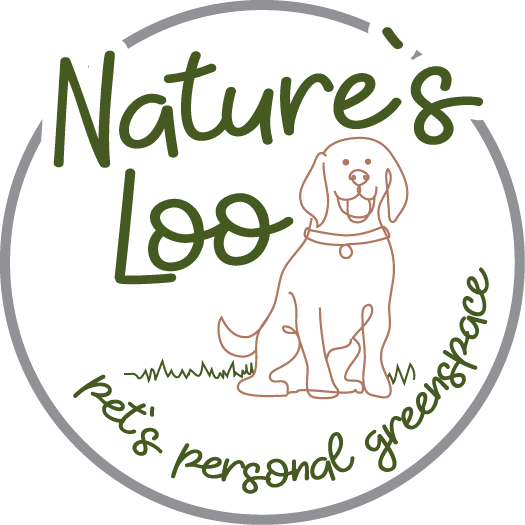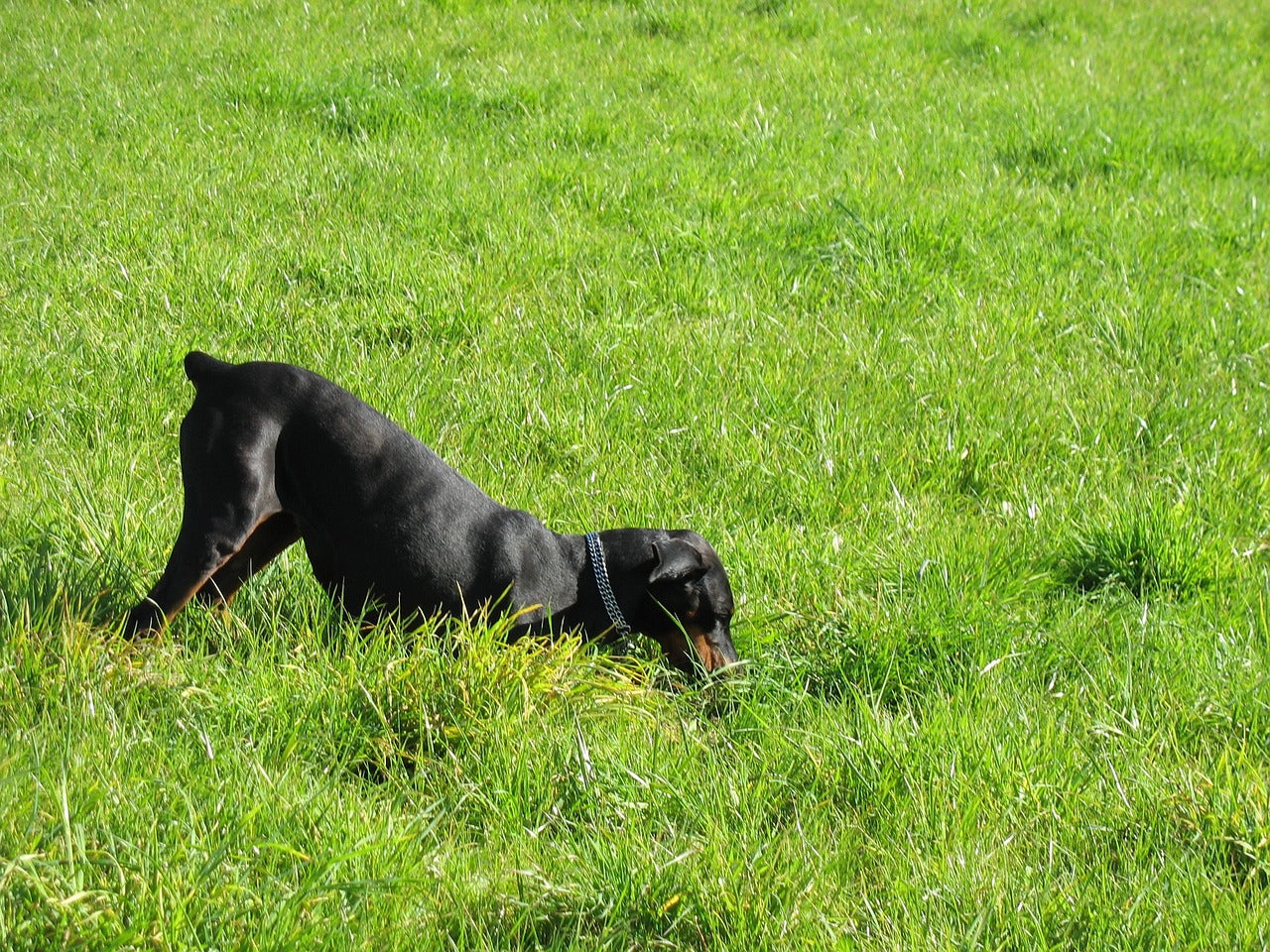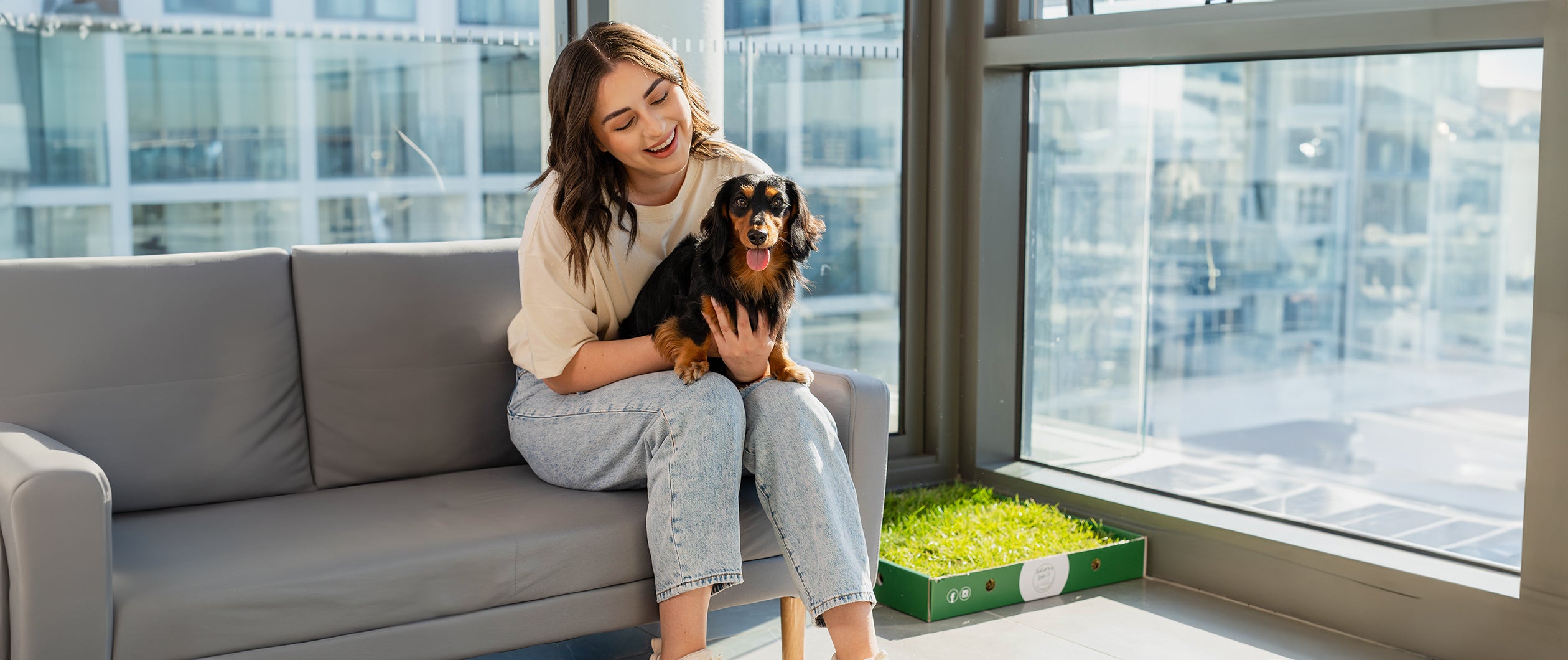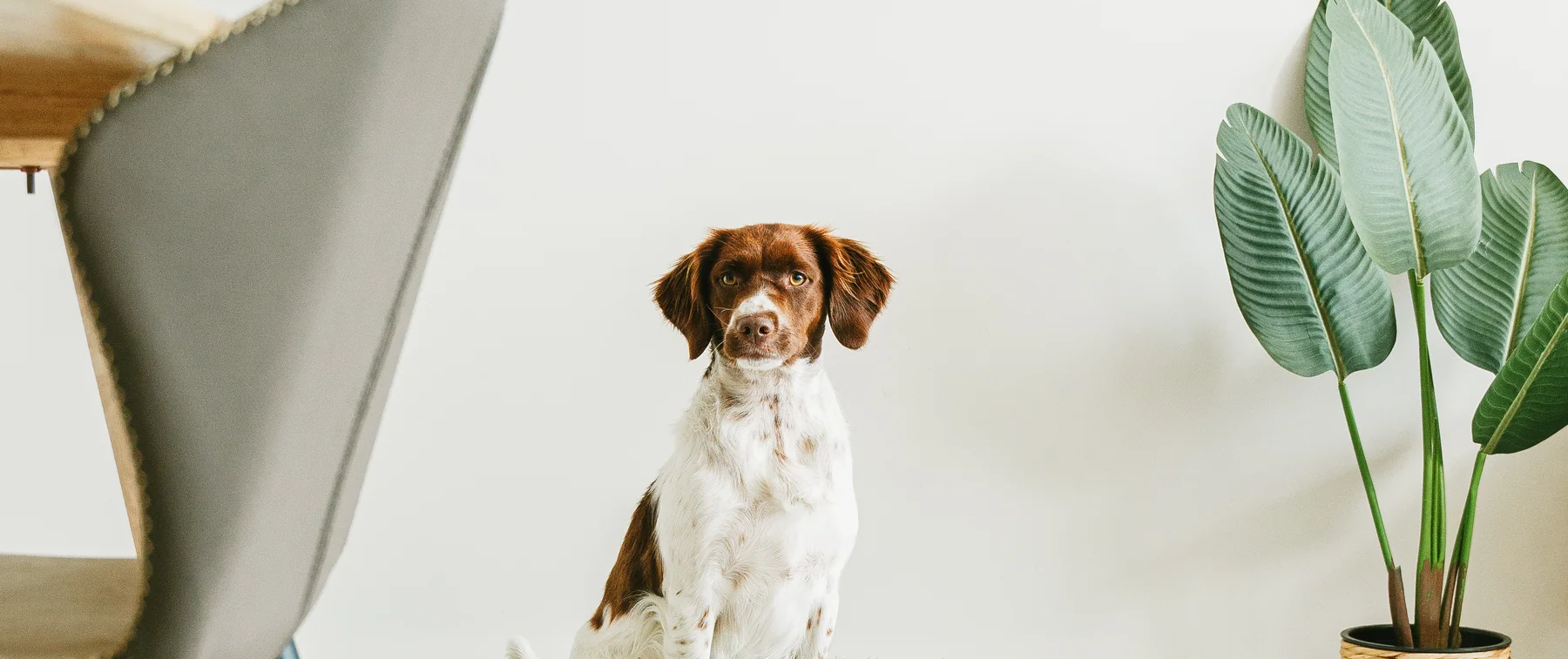
7 Must Dos to Successfully Potty Train an Older Dog
Despite the saying, “You can’t teach an old dog new tricks,” in reality, it’s possible — including housetraining. While it might be hard work at first, the process of potty training older dogs is fairly simple and ultimately rewarding.
No matter their age, it’s never too late to potty train your pooch. To make the task easier, we’ve created this guide with some tips and tricks you can try.
How to Potty Train an Older Dog
If you’ve just come to care for an adult dog, assume that your new dog is not yet housetrained and that you must start from scratch. After all, you and your pooch both need some time to learn about each other so you can go on the path to potty success.

Establish a routine.
It’s important to have your older dog on a regular schedule, from their mealtimes to their bathroom breaks. Take your pooch out at the same time every day – first thing in the morning as soon as they wake up, after breakfast and dinner, when you arrive home from work and before you go to bed.
If you have a dedicated potty space indoors, like the Nature’s Loo Real Grass Dog Toilet, guide your furbaby to the toilet and wait until they are finished. Then, give them a treat and praise them lavishly after they are done eliminating so they understand that this is a desired behaviour.
Introduce a crate.
If you cannot supervise your older dog at all times, they will benefit from having designated areas to stay in while they are not on a potty break. You can confine them to a crate, pen or an area small enough where they can comfortably stand, lie down and turn around. Ensure that the space is not too big as they might be compelled to eliminate inside it.
Once your dog has been confined for several hours, you can take them out and then head straight to their bathroom spot. Don’t forget to praise and give treats when they’ve successfully relieved themselves!

Use a leash.
Whether your dog is taking a bathroom break indoors or outdoors, a leash helps ensure your pooch stays within a small area and increases the chances of going potty in the desired spot. It will also help them focus on the action.
If you’re using Nature’s Loo Real Grass Dog Toilet, start by joining 2 trays together to create a spacious potty area and increase the odds of your dog hitting their target. Over time, you can remove the extra tray if your dog consistently stays in one spot. If you have a larger dog, however, they may typically require 2 or more trays.
Consider naming the deed, for example, saying “go potty” as they relieve themselves so they learn what you expect when you use that command. Once they get the hang of things, you can let them do their bathroom break by themselves using the command.
Wait at least 5 minutes.
It’s not uncommon for adult dogs to have accidents even after you’ve tried taking them to their potty area. They are not doing this on purpose – rather, they may not have stayed at that spot long enough. Allow them to sniff around and check the area thoroughly – for at least 5 minutes – before relieving themselves. Try to be as still and silent as much as possible so you don’t distract them from what they’re supposed to do. If they are interrupted, they might end up finishing their business indoors.
If, after 5 minutes, your dog still has not peed or pooped, you can return them to their designated area indoors and wait 10 minutes before trying again. Over the course of a few weeks, you can allow them a little freedom – about 10 to 15 minutes – once they’ve eliminated outside or on their tray successfully. You can gradually increase this time once you’ve learned their bathroom habits.

Look out for the signs.
Not all dogs will give their owners a signal (like barking or scratching the door) which means it’s time to go potty. Instead, watch out for behaviours like pacing, whining, circling or sniffing purposefully. Once you’re alerted by these telltale signs, immediately take them to their approved potty spot.
Avoid punishment.
No matter how attentive or careful you are, bathroom accidents can still happen. When it does, remain calm and avoid scolding or punishing your dog. They might misunderstand the reason for your anger, becoming afraid to pee or poop in front of you. Instead, lead them to their potty area and continue to praise and give treats once they’ve performed the correct behaviour. Once done, clean up their accident with pet friendly cleaners and an odour eliminator to discourage them from eliminating on that spot again.
Repeat. Repeat. Repeat.
Repetition is key when it comes to potty training older dogs. It can take anywhere from just a couple of weeks up to months in cases of senior dogs who have less control over when they need to pee or poop. Take notes and keep track of when and where your dog eliminates so you can easily recognise patterns and better support your furry friend’s training.
Training adult dogs requires lots of patience and consistency, so prepare yourself. Your pooch also wants to get it right, but he’ll need a little help from you to figure things out.
Looking for more tips and guides? Sign up for our newsletter to keep updated on proper pet care, or read our blog here.
